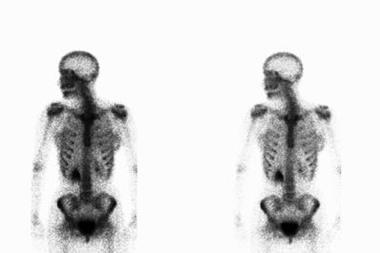Building sites can be dangerous places. Andrew Stokes and Chris Baranowski believe that CDM 2007 should reduce bureaucracy and make it easier for everyone to understand their responsibilities
The construction industry in the UK has made good progress in reducing the number of fatal and major injuries since 2000. Despite this, it is still falling short of its own ambitious targets set at the 2001 Construction Summit. The Construction, Design and Management (CDM) Regulations 1994, which aimed to improve health and safety in the industry, had been criticised as being unnecessarily complex and bureaucratic, thereby frustrating their aims.
Following several years of consultation by the Health and Safety Executive (HSE), the new CDM Regulations 2007 came into force on 6 April 2007 and represent the most important regulations covering the construction industry. They bring the CDM Regulations 1994 and the Construction (Health, Safety and Welfare) Regulations 1996 into a single regulatory package, providing a clear focus on communication, cooperation, management and competence within each project team. The regulations are supported by an approved code of practice which provides practical guidance on complying with the duties.
The aim of the new regulations is to integrate health and safety into the management of a project from the very start, so that risks are identified early and everyone is involved in improving planning and management. The new regulations will have a huge impact, as they apply to all construction projects.
There will no longer be a trigger point, as under CDM 1994, for the duties to apply. However, there will be additional duties once a project becomes 'notifiable'. A project becomes notifiable when a project is ‘likely’ to involve more than 30 days or 500 person days. Under CDM 1994 the test was projects that ‘will’ involve more than 30 days or 500 person days. All projects that have been notified to the HSE prior to the new regulations coming into force, will be deemed to be notified – there is no need to re-notify. Projects must be notified as soon as possible where this has not yet happened.
The core general management duties will apply to the client and to all duty holders, who are required to cooperate with any other person at work on the same or any adjoining site. Pre-construction information needs to be available to all interested parties for all construction projects, whether they are notifiable or not.
The client
The new regulations will have most impact on the role of the 'client', who will have to take on new and greater duties in managing the design process and ensuring health and safety compliance. The client is simply an individual or any organisation that uses the services of another to carry out construction work, including the planning, design and management of a project.
The client is under a duty to take reasonable steps to ensure suitable arrangements for managing the project are made by the duty holders. A key change is that clients will no longer be able to appoint an agent to assume their legal duties. The removal of the client's agent effectively shifts the burden of ensuring health and safety compliance and liability back to the client .
The client will have to ensure that every designer and contractor is promptly provided with pre-construction information. This refers to any information affecting the site and includes the information in any existing health and safety file. The client will also have to ensure that those appointed are competent and that arrangements are made for safely managing the project. The client must also ensure that sufficient time is given to the principal contractor to plan and prepare the work, and must also be satisfied that the principal contractor's construction phase plan complies with the regulations, before work starts.
Once a project is notifiable, the client is required to appoint the CDM co-ordinator as soon as practicable. Until such an appointment is made in writing, the client will be deemed to take on the role of the co-ordinator by default.
Domestic clients do not have any duties, although the regulations do apply to projects for a domestic client.
The designer
As before, the main duty of the 'designer' is to avoid foreseeable risks to the health and safety of any person carrying out construction work or using it post-completion. Previously, the occupier of a building alone would be responsible for ensuring the building complied with health and safety legislation. However, under the new regulations, a designer will have extended duties when designing a structure for use as a workplace. The designer must take into account the provisions of the Workplace (Health Safety and Welfare) Regulations 1992 in respect of the design of the structure and the materials used. The designer must also provide sufficient information about the design, as will adequately assist clients, other designers and contractors.
Where a project is notifiable, the designer must await the appointment of a CDM co-ordinator before starting work other than initial design work.
CDM co-ordinator
The former appointment of a planning supervisor is replaced by the 'CDM co-ordinator' who will have enhanced duties, in particular, assisting the client and co-ordinating health and safety measures. The CDM co-ordinator will have to liaise with the principal contractor about the health and safety file and take all reasonable steps to ensure co-operation between designers and the principal contractor during the construction phase. Additionally the co-ordinator must ensure that notice of the project is given to the HSE as soon as is practical.
Any planning supervisor appointed under the 1994 regulations will, in the absence of any express appointment by the client, be appointed as the CDM co-ordinator. All planning supervisors already on an existing project must start applying the new regulations from the outset. They will be required to obtain the necessary training to become qualified as competent CDM co-ordinators within 12 months of the new regulations coming into force. This is likely to require additional training and new accreditation for existing planning supervisors.
Principal contractor
The 'principal contractor' has a key role in managing the construction phase. The former duty of the planning supervisor to prepare a health and safety plan is replaced by requiring the principal contractor to prepare a construction phase plan. Duties include ensuring contractors engaged are competent and checking that suitable site inductions and training are given to workers carrying out the work.
'Contractors' are the least affected by the regulation changes, although there is now more emphasis on safety management, welfare and the competence of those carrying out the construction work. Contractors are required to plan, manage and monitor construction work so that it is carried out without health and safety risks, so far as is practicable.
Whether the new regulations will improve health and safety on construction sites remains to be seen, but CDM 2007 should reduce the problems of bureaucracy and make it easier for duty holders to understand their responsibilities. They should encourage the duty holders to treat health and safety considerations as a vital but normal component in the development of a construction project and strengthen co-operation and co-ordination between the different parties.
Liability
The regulations will also increase the potential liability for all individuals and companies offering CDM services, in particular clients and co-ordinators. There can be civil liability imposed on duty holders for breaches of their duties under the regulations but only in respect of duties to their own employees. Breaches of the regulations, particularly where the breach results in an accident causing personal injury, is likely to result in a criminal prosecution by the HSE. A successful criminal prosecution can potentially result in an unlimited fine if the case is dealt with by the Crown Court. In the case of a fatality, there will be a greater risk of a prosecution for corporate manslaughter once the new Corporate Manslaughter Bill is implemented.
Implications for insurers
Insurers also face potential liability under the regulations, for example where they have appointed a building contractor following a property claim by a customer. Given that in recent years, insurers and loss adjusters have appointed large numbers of building contractors and other suppliers, they will be more exposed to an HSE prosecution for a breach under the new regulations if there is an injury on site, especially if they have failed to ensure the competence of the contractor concerned. Importantly, insurers will no longer be able to pass their legal responsibilities on to an agent. There will be a greater risk to insurers in situations where they have to appoint contractors in potentially high risk activities, such as dealing with hazardous substances, working on scaffolds and demolition work.
On 10 May 2007, a parliamentary debate took place after the Opposition tabled an Early Day Motion for an annulment of CDM 2007. However, Andrew Selous MP informed the committee that the motion had only been tabled to prompt a debate and that it was not the Opposition's intention to press for a vote. He indicated that the debate was to consider any additional measures that could be taken to strengthen health and safety in the construction industry. He asked the Government:
1 what action will be taken to ensure the fullest possible integration with the planning and building regimes?
2 whether a review of the regulations' progress would be put into the public domain after a suitable period?
3 whether anything more will be undertaken to help businesses to comply with the regulations?
In response, the Government said that the Health and Safety Commission would be keeping the regulations under review and would be commissioning research long before the usual five year review. The Government's view is that to widen the scope of the regulations would be disproportionate to the risks on small sites. It also confirmed that guidance is being drafted for construction clients and that the HSE is reissuing the relevant information sheet.
Andrew Stokes is a partner, and Chris Baranowski, an associate, in the safety, health and environment group, Beachcroft LLP, www.beachcroft.co.uk
CHECKLIST
To avoid any potential pitfalls arising from the new regulations, it is imperative that those involved in a construction project:
• are satisfied that they or their employees are competent to take on the role
• check the competency of the current duty holders and whether any changes need to be made
• document the competency of duty holders
• appoint a competent co-ordinator where one is not yet appointed – otherwise the client assumes such duties (the planning supervisor, if previously appointed, automatically becomes the co-ordinator from 6 April 2007).
• if clients, review their standard terms of appointment and consider new terms for the appointment of CDM co-ordinators
• increase health and safety training for employees undertaking the roles
• review procedures to ensure compliance with the regulations
• have sufficient resources and time to prepare for and plan the construction works
• ensure they have access to all the relevant pre-construction information
• understand the principles of prevention in the performance of their duties
• put adequate insurance cover in place to include legal representation in the event of HSE/corporate manslaughter prosecutions
• seek legal advice as soon as a serious accident has occurred, so that they can be prepared for any HSE or police investigations – essential where the injured party is the duty holder's employee.

















